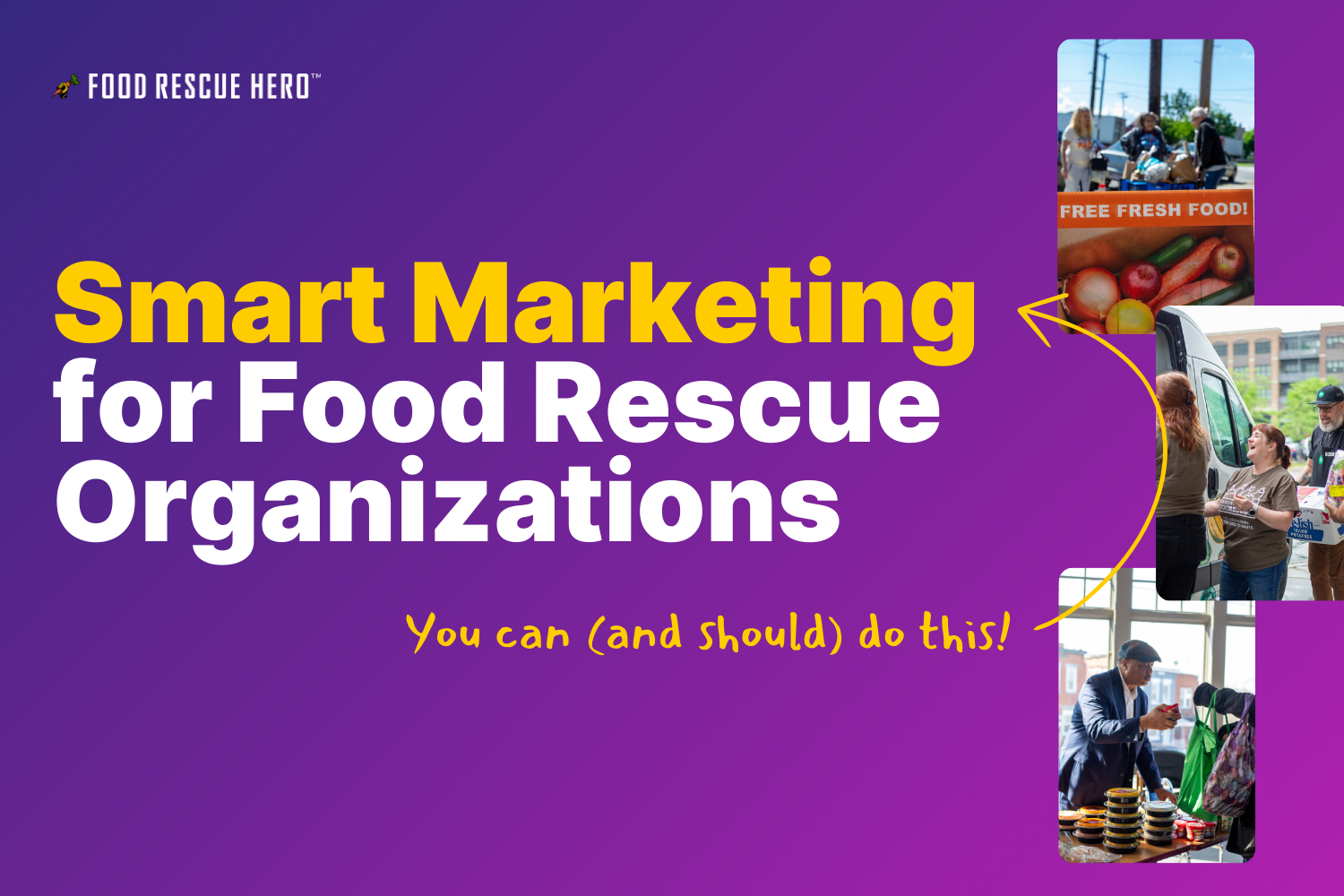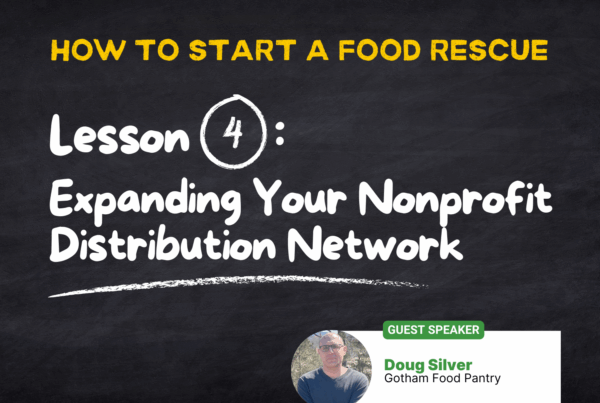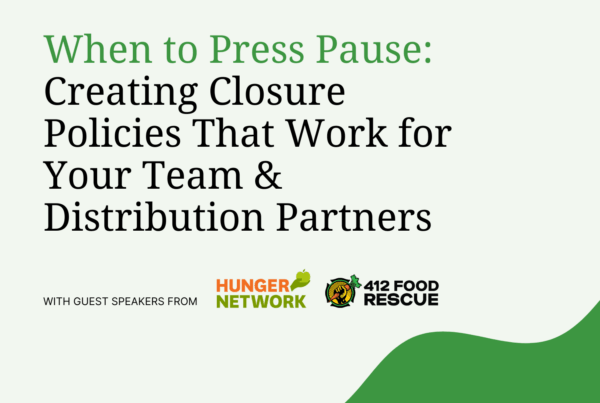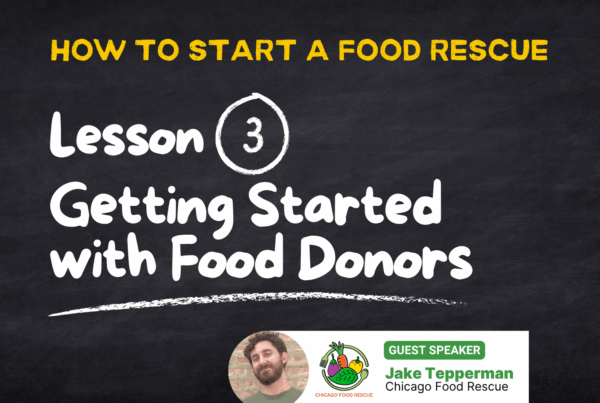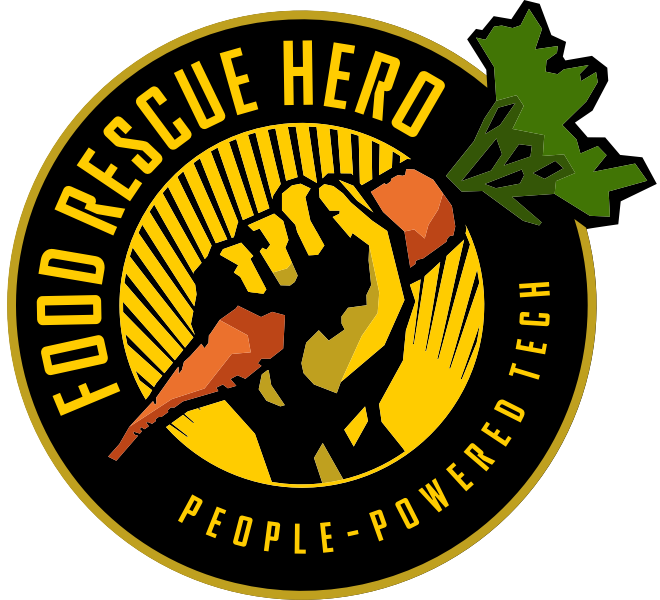Regardless of the size of your food rescue organization, marketing is essential to grow awareness and impact. With limited resources, a basic plan goes a long way.
In our July webinar, Jon Meck (Senior Vice President of Marketing at Bounteous) shared practical tips and strategies to help food rescue organizations enhance their marketing efforts, regardless of size or budget.
Watch our July 2024 webinar:
"Smart Marketing for Food Rescue Organizations"
Understanding Smart Marketing
In organizations with limited resources and budget, it pays to work smarter, not harder. Smart marketing follows these rules:
- Aligned with a plan: Creating a simple but structured plan to guide marketing efforts, and follow the plan.
- Supporting multiple use-cases: Leveraging a single piece of content across various channels and formats maximizes for impact. Create something once, and use it again and again.
- Creating durable items: Producing content that remains relevant and can be reused over time.
Developing a Marketing Strategy
Content marketing is a strategic approach to create and distribute valuable, relevant, and consistent content to attract and engage a clearly defined audience. The goal is to build trust, drive customer action, and foster lasting relationships by providing information that meets your audience’s specific needs and interests.
To develop an effective content marketing strategy, Jon outlined four key areas:
- Messaging and Themes: Clearly define the core messages and themes that represent the organization. For example, a food rescue organization might focus on community impact, food waste reduction, and environmental benefits.
- Audiences: Identify and segment the different groups of people the organization aims to reach, such as volunteers, donors, partners, and the general public.
- Segments: Further break down audiences into smaller segments based on characteristics like age, occupation, and motivations. Understanding these segments allows for tailored messaging and engagement.
- Stages: Recognize that individuals are at different stages of their relationship with the organization—awareness, consideration, decision, and retention. Tailor content to address the needs of each stage.
(If you’re just getting started with content marketing, you’re in luck! Every organization already has more marketable material than they realize.)
Execution and Content Creation
The Marketing Activity Matrix helps organizations categorize and plan their marketing activities. The matrix includes:
- Awareness: Activities to build brand recognition and credibility, such as articles, social media posts, and community events.
- Consideration: Content that encourages deeper engagement, like webinars, case studies, and impact reports.
- Decision: Calls to action that drive results, such as volunteer sign-ups, donation requests, and partnership opportunities.
- Retention: Efforts to maintain long-term relationships, including newsletters, appreciation events, and personalized communications.
It’s important to create a central repository for all of the branded content your organization creates. This approach ensures that content is easily accessible and can be repurposed across various channels. For example, a webinar recording can be turned into an article (like this one!), social media clips, and highlights for newsletters.
Documented brand standards (voice, tone) make it easy to create content that supports your organization’s message and goals. Create content playbooks to streamline processes and ensure consistency. These playbooks can serve as guides for different types of marketing activities, making it easier for team members to follow best practices and maintain high-quality standards.
Conclusion
By implementing these smart marketing strategies, food rescue organizations of all sizes can effectively communicate their mission, engage their audiences, and drive meaningful results:
- Develop a clear marketing plan with defined messages and themes.
- Identify and segment audiences to tailor engagement strategies.
- Create durable content that can be repurposed across multiple channels.
- Use tools like the Marketing Activity Matrix to plan and execute marketing activities.
- Document processes with playbooks to ensure consistency and efficiency.
The key to smart marketing is working smarter, not harder!


